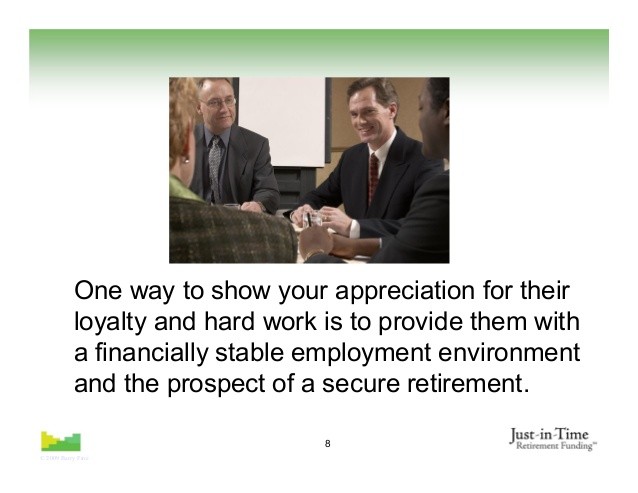What is the best way to prospect for 401k plans
Post on: 16 Март, 2015 No Comment

Rosa Level 13
Hi Paul,
Thanks for your question! The best way to win new 401k business is by first identifying the best opportunities for yourself. BrightScope’s rating system is one way to identify plans that may be in trouble.You will find plans in our database that may have high fees, poor investment menu quality, or other problem areas. As the Director of Spyglass Customer Support, one of BrightScope’s 401k prospecting tools, I frequently work with our clients to identify and target the best opportunities. I hope this explanation helps.
5 votes
The following is an excellent article to keep in mind when you are evaluating plan providers.
5 Characteristics of a Great 401(k) Plan May. 31 2011 Posted by Michael Chamberlain Forbes Magazine
US News recently published an article titled “5 characteristics of a good 401k”.
If you had a choice, wouldn’t you want a Great 401(k) rather than just a just good one?
As background, the 401(k) rules from the DOL and IRS are complex. Employers are busy running their companies and have little expertise running a plan. Employees are poorly prepared to know how much to contribute or how to invest their money. Because of these three facts, the financial services industry, insurance companies and broker dealers have made a killing at the expense of American workers. As a result most 401(k) plans can be dramatically improved to the level of a “great” plan.
Below are the 5 characteristics of a GREAT 401(k) plan, keeping in mind that the goal of all great 401(k) plans is to provide meaningful retirement income for the employees of the plan.
- The plan hired an Investment Fiduciary. Some companies are aware that the DOL requires that they hire an expert if they do not have the expertise. Most others have no idea of this requirement. The best plans know and the plan and the participants are best protected by the fiduciary standard rather then the suitability standard of broker dealers and insurance companies.
There are two types of investment fiduciary. The first is a 3(38) “investment manager” who makes the investment decisions for the plan and is best suited to the employer who understands that neither they nor even an investment committee have the time or expertise to make prudent independent investment decision for the plan.
The second type of fiduciary is referred to as a 3(21) and provides “independent objective advice” to the investment committee who makes the final decision as to investment selection and monitoring.
In either case the investment fiduciary keeps the plan and the participants interests foremost at all times which is not the case with a representative of an insurance company (such as John Hancock, ING, Principal or Transamerica) or an investment services company (such as Fidelity, T. Rowe Price, Franklin Templeton, UBS or Black Rock)
Employees contribute a reasonable amount to their accounts. Starting contributions early in a career and contributing at a reasonable level are the two most significant factors for meaningful retirement income. The focus of employee education should be here and not on how to pick an investment. Employers need to be encouraged to institute plan features such as automatic enrollment with opt-out and stepped up contributions.
Improved investment performance with professionally managed portfolios for participants. Most plan participant investments under perform the markets. Participants are much better served with portfolios that are professionally managed by the independent investment fiduciary. The concept is that different portfolios with different levels of risk and expected return are offered. The investments within each portfolio are selected based on a prudent process and are not influenced by any investment or insurance company. The investments are monitored and funds are removed if they fail to pass the quarterly screening. The models are automatically rebalanced.
The key is to get each participant into the correct portfolio, based on his or her goals, timing and risk tolerance. With these managed portfolios, the participants understand the expected rate of return and the range of returns. As the participant gets closer to retirement, they move from one model to the next. This is much more effective than target date funds.
Low cost. The DOL has indicated that excess fees can greatly reduce account values at retirement. Controlling costs is a DOL and ERISA requirement of plan sponsors. The financial services industry has robbed plan participants for too long. New DOL regulations are coming to make fee disclosure more transparent but it is up to the plan sponsor to keep more money in the participants’ accounts rather than going to a plan service provider. Part of the task of the investment fiduciary is to help the plan sponsors in this area. The cost for the services of an investment fiduciary and other plan costs is typically lower than what a plan is currently paying.
Better utilization of staff time and decreased plan sponsor liability. The investment fiduciary decreases the time required by the investment committee to monitor the plan, which allows the senior staff to do what they do best which is to run the company. The use of model portfolios decreases the time required for employee investment education (that does not work anyway). The goal is to motivate the employee to use the fiduciary expertise and start building more funds for retirement not how to pick a fund. When the investment fiduciary accepts fiduciary status in writing and selects and monitors the investments, the liability of the plan sponsor and other plan fiduciaries is significantly reduced.
In conclusion, with the uncertainty of Social Security and the lack of traditional pensions, we as a nation cannot afford to have poor or even good 401(k) plan. We all need GREAT retirement plans.
It is not that hard to enhance a 401(k) plan to be great. What is hard is to get the attention of the plan sponsor when they are busy trying to make the company successful. Unfortunately, the importance of the 401(k) plan takes a backseat to more pressing issues.
Comment | Flag | Mar 20, 2012 from Lititz, PA














